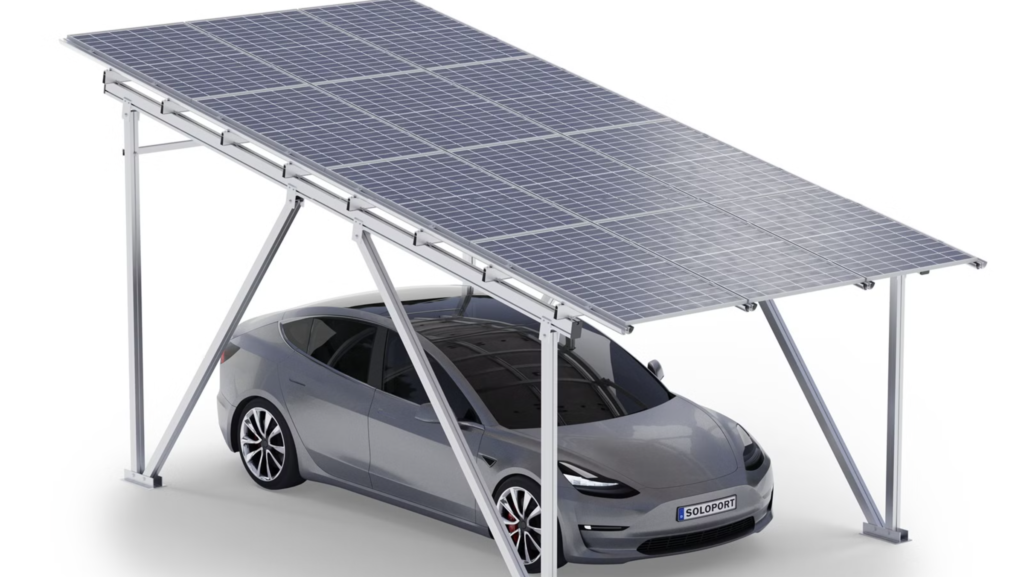The impact of high temperature on the performance of solar panels is multi-faceted, mainly including the following points:
First, the power generation efficiency decreases
Solar panels have the highest power generation efficiency under ideal conditions (typically at 25°C). However, when the temperature rises, the open-circuit voltage of photovoltaic cells will decrease, resulting in a decline in the overall output voltage and power, thereby affecting the power generation efficiency. Studies show that for every 1 degree Celsius increase in operating temperature, the conversion efficiency of photovoltaic cells typically decreases by approximately 0.4% to 0.5%. For instance, during the hot summer weather, the surface temperature of solar panels may reach as high as 65°C, and at this time, the power generation efficiency of the panels will drop significantly. This loss of efficiency, although seemingly minor, accumulates to a considerable amount of energy loss over long-term operation and large-scale application.
Second, the aging of materials is accelerating
High-temperature environments will accelerate the aging process of photovoltaic cell materials. When exposed to high temperatures for a long time, the packaging materials and electrode structures inside the battery may be damaged, leading to performance degradation or even failure of the battery. This not only affects the service life of the solar panels, but may also increase maintenance costs and replacement frequency.
Third, the hot spot effect
High temperatures can also easily cause the “hot spot effect” of photovoltaic panels. When certain parts of the solar panels are blocked or damaged, these areas will become hotspots, and the local temperature will rise sharply. The hot spot effect not only affects the power generation efficiency of the solar panels, but may also cause damage to the entire panel and even lead to safety hazards such as fires.
Fourth, PID effect
High-temperature and high-humidity environments are prone to induce the PID effect (electropotential-induced attenuation) of components. The PID effect refers to the phenomenon where the encapsulation materials of battery modules and the materials on their upper and lower surfaces undergo ion migration under the high voltage between the battery cells and their grounding metal frames, thereby causing performance attenuation of the modules. The PID effect can lead to a decrease in the power output of photovoltaic modules, and in severe cases, it may even cause module failure.
Fifth, the impact on other components of photovoltaic systems
In addition to directly affecting the solar panels themselves, high temperatures may also have an impact on other components in the photovoltaic system. For instance, the inverter, as an important component of the photovoltaic system, is composed of numerous electronic components inside. High-temperature environments can affect the heat dissipation efficiency of inverters, leading to a decline in the performance of components and, in turn, the overall lifespan of the inverter.
Sixth, Countermeasures
To mitigate the impact of high temperatures on the performance of solar panels, the following measures can be taken:
Optimize the installation location and method: Select an installation location with good ventilation, avoiding direct sunlight and obstruction, maintaining an appropriate gap between the solar panel and the installation surface, and using wind force and natural convection to reduce the working temperature of the solar panel.
Enhance ventilation and heat dissipation design: Add heat dissipation materials between the solar panel and the mounting surface, or design a dedicated heat dissipation system, such as fans or heat pipes, etc.
Select efficient and high-temperature resistant materials: Choose solar panel materials with higher conversion efficiency and better high-temperature resistance, such as new battery technologies like PERC and HJT.
Intelligent monitoring and maintenance: Install an intelligent monitoring system to monitor the operating status and temperature of solar panels in real time, and promptly identify and handle potential issues. Regularly cleaning the surface of the solar panels to remove dust and dirt also helps improve light absorption efficiency and heat dissipation performance.
In conclusion, the impact of high temperatures on the performance of solar panels is multi-faceted. However, through scientific installation design, selection of high-efficiency materials, implementation of intelligent monitoring and maintenance measures, the influence of high temperatures on the performance of solar panels can be effectively mitigated, their service life can be prolonged, and the power generation efficiency can be improved.


